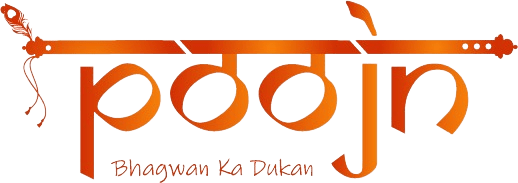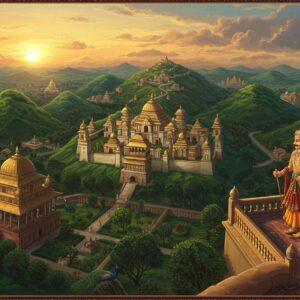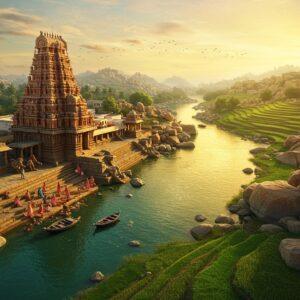
Bharat is a beautiful mosaic of countless cultures, each with its own unique colour and story. Deep in the heart of Assam, the Rabha community lives as a vibrant thread in this magnificent tapestry. Their world is woven with ancient traditions, a deep connection to nature, and a language that carries the wisdom of generations. Come, let us take a journey to understand the rich heritage and linguistic soul of the Rabha people.

A Glimpse into Rabha Life and Traditions
The Rabha people, with their Tibeto-Burmese roots, have created a beautiful culture that harmoniously blends Aryan and Mongoloid influences. Their society is primarily matrilineal, a beautiful system where lineage and inheritance are traced through the mother’s side, giving women a central and respected role in the family and community.
Life in a Rabha village revolves around agriculture. The fields are not just a source of livelihood but a sacred space where men and women work side-by-side, nurturing the land that sustains them. This profound respect for the earth is a cornerstone of their beliefs, reminding us of Hinduism’s sacred relationship with nature. Another mesmerising aspect of their culture is the art of weaving. Rabha women are master weavers, their hands creating magic on the loom. They craft stunning, colourful clothes, often adorned with traditional beads and silver jewellery, each piece telling a story of their identity and artistic spirit.
Rabha Khurang: The Language that Binds a People
At the very heart of the Rabha identity is their language, lovingly called Rabha katha or Rabha khurang. This tongue, belonging to the Sino-Tibetan language family, is more than just a means of communication; it is the vessel that holds their history, folklore, and collective memory. Many people often wonder about the specifics of the Rabha language. It is a complex and beautiful system with eleven known dialects, though today, only a few like Rongdani, Maituri, and Kocha are actively spoken. This linguistic diversity within the community shows its rich internal tapestry.
Over time, with close interaction with neighbouring communities, many Rabha groups have adopted Assamese for daily conversations. This has led to the natural evolution of a mixed dialect, which some researchers fondly call “Rabhamese,” a testament to the community’s adaptive and inclusive nature. The importance of the Rabha language cannot be overstated; it is the key that unlocks their traditional knowledge, from farming techniques passed down through generations to ancient medicinal practices.
Unique Features of the Rabha Tongue
What makes the Rabha language truly fascinating are its unique characteristics. Unlike many Indo-Aryan languages, its personal pronouns do not change to reflect social status, suggesting a more egalitarian social view embedded in the language itself. However, it shows a nuanced understanding of the world by using different interrogative pronouns for people (masculine-feminine) and objects (neuter). Even more interestingly, there are subtle differences in vocabulary, especially in kinship terms, between what men and women traditionally speak, offering a small window into their distinct social roles and perspectives.

Keeping the Flame Alive: Challenges and Triumphs in Preservation
Like many indigenous languages across the world, Rabha Khurang faces its share of challenges. The pressures of globalisation and the dominance of widely spoken languages often push traditional tongues to the background. This makes it harder for younger generations to stay connected to their linguistic roots. The journey to preserve this precious heritage is ongoing, filled with both struggle and hope.
The good news is that the Rabha community is resilient. Dedicated efforts to restore and promote the language began as early as 1959 and have gained significant momentum since 2001. Community organisations and vibrant cultural festivals play a huge role, creating spaces where the language is spoken, celebrated, and passed on. These gatherings are crucial for keeping the traditions alive and breathing. To ensure these languages thrive, support from government and cultural bodies is essential for documenting the language and creating educational materials. You might find that many communities have formalised preservation through dedicated learning centres, much like the spiritual and cultural education offered at places like the Dhekiakhowa Bornamghar in Assam.
Connecting with Tradition in Our Own Homes
Exploring and respecting diverse cultures like the Rabha’s enriches our own lives. One of the simplest ways to connect with any tradition is by creating a pure and serene atmosphere in our own homes. A peaceful environment helps us reflect and learn with an open heart. The gentle aroma of incense or dhuno can transport us to a place of tranquility, making our home a sanctuary for spiritual and cultural exploration.
At poojn.in, we understand the importance of authenticity in your spiritual journey. We bring you items that help create that perfect, sacred ambience.
- Create a Fragrant Atmosphere: Lighting an agarbatti is a timeless Indian tradition to purify the space and calm the mind. Our Kushal Mangal Kasturi Puja Agarbatti offers a divine fragrance that is perfect for your daily prayers or moments of quiet reflection.
- Embrace Traditional Dhuno: The practice of burning dhuno (resin) is deeply rooted in our traditions for cleansing the environment of negativity. Use our Handmade Mitti Dhuno Pot for an authentic and safe experience, filling your home with positive energy.
Looking Towards a Bright Future
The story of the Rabha people and their language is a powerful reminder of the importance of preserving our indigenous cultures. Their resilience, combined with modern efforts like using digital platforms to teach the language, paves a hopeful path for the future. By supporting these efforts and taking an interest in such beautiful cultures, we contribute to keeping India’s incredible diversity alive.
Promoting indigenous languages in Assam and across India is not just about saving words; it is about cherishing unique worldviews and preserving the very soul of our nation’s heritage. Let us celebrate the Rabha community and all the other indigenous groups who make India truly incredible.


